Honda CR-V: Safety of Infants and Small Children / Installing a LATCH-Compatible Child Seat
A LATCH-compatible child seat can be installed in any rear seats. A child seat is attached to the lower anchors with either the rigid or flexible type of connectors.
- Locate the lower anchors under the marks.
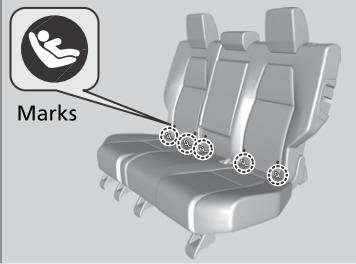
- Place the child seat on the vehicle seat, then attach the child seat to the
lower anchors
according to the instructions that came with the child seat.
- When installing the child seat, make sure that the lower anchors are not obstructed by the seat belt or any other object.
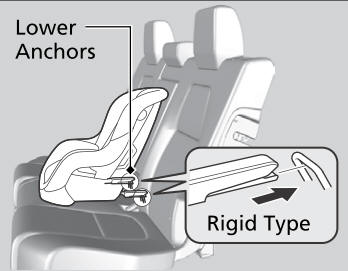
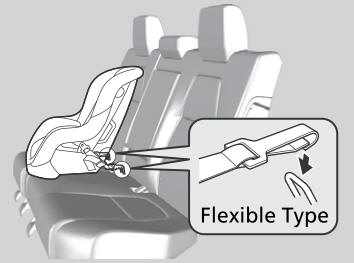
- Outer position. Put the head restraint to
its upper-most position, then route the tether strap between the head restraint
legs, and secure the tether strap hook to the anchor.
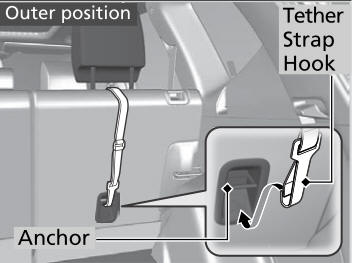
- Go to step 9.
- Center position. Put the head restraint to
its upper-most position.
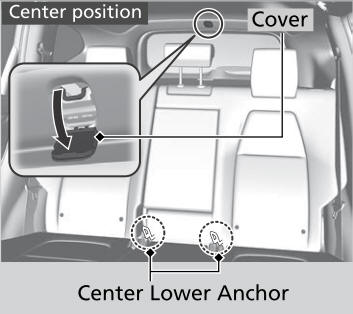
WARNING
Never attach two child seats to the same anchor. In a collision, one anchor may not be strong enough to hold two child seat attachments and may break, causing serious injury or death.
For your child’s safety, when using a child seat installed using the LATCH system, make sure that the child seat is properly secured to the vehicle. A child seat that is not properly secured will not adequately protect a child in a crash and may cause injury to the child or other vehicle occupants.
- Open the anchor cover.
- Route the tether strap through the head restraint legs.
Make sure the strap is not twisted.
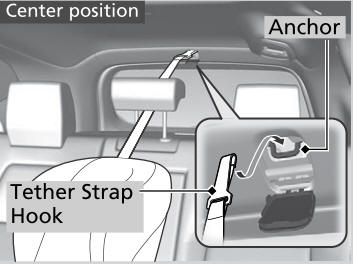
- Secure the tether strap hook to the anchor.
- All models. Tighten the tether strap as instructed by the child seat manufacturer.
- Make sure the child seat is firmly secured by rocking it forward and back and side to side; little movement should be felt.
- Make sure any unused seat belt that a child can reach is buckled, the lockable retractor is activated, and the belt is fully retracted and locked.
 Selecting a Child Seat
Selecting a Child Seat
Most child seats are LATCH-compatible (Lower Anchors and Tethers for Children).
Some have a rigid-type connector while others have a flexible-type connector...
 Installing a Child Seat with a Lap/Shoulder Seat Belt
Installing a Child Seat with a Lap/Shoulder Seat Belt
A child seat can be installed with a lap/shoulder belt in any rear seat or,
if absolutely
necessary, the front passenger seat.
Place the child seat on the vehicle seat...
Other information:
Honda CR-V 2017-2024 Owner's Manual: Emergency Engine Stop
Models with smart entry system The ENGINE START/STOP button may be used to stop the engine due to an emergency situation even while driving. If you must stop the engine, do either of the following operations: Press and hold the ENGINE START/STOP button for about two seconds...
Honda CR-V 2017-2024 Owner's Manual: Emissions Testing
Testing of Readiness Codes Your vehicle has readiness code as part of the onboard self diagnostic system. Some States use these codes for testing to verify whether your vehicle's emissions components are working properly. The codes may not be read properly if testing is performed just after the battery has gone dead or been disconnected...
Categories
- Manuals Home
- Honda CR-V Owners Manual
- Honda CR-V Service Manual
- To rapidly defrost the windows
- Display Setup
- Rear Seats
- New on site
- Most important about car
How the Front Airbags Work

While your seat belt restrains your torso, the front airbag provides supplemental protection for your head and chest.
The front airbags deflate immediately so that they won't interfere with the driver's visibility or the ability to steer or operate other controls.
